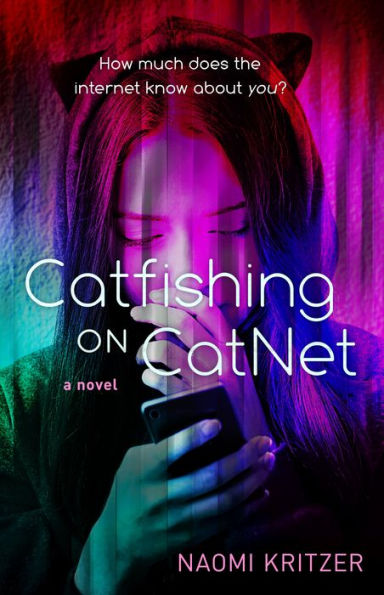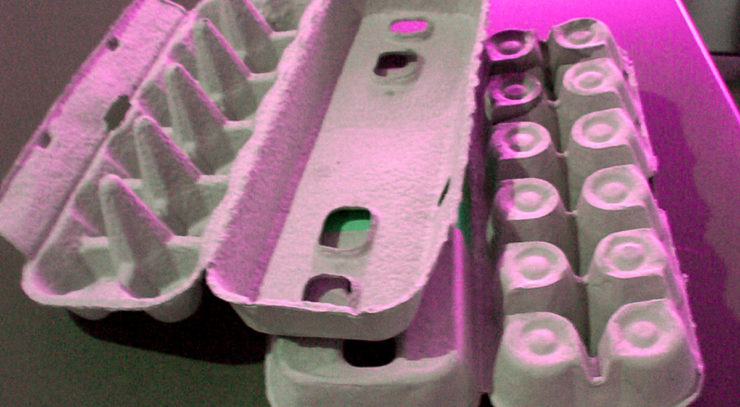Sometimes, you’re haunted by your own stories. I wrote “So Much Cooking” in 2015: in it, a food blogger describes cooking in quarantine during a pandemic, feeding an ever-increasing number of children she’s sheltering at her house with an ever-decreasing supply of food. For over a year after I wrote the story, every time I saw powdered egg replacer at the store I’d be tempted to buy some. Just in case. One of the very first things my protagonist runs out of is eggs—I’ve cooked with commercial egg replacer before, it works very nicely for things like cookies, and it’s shelf-stable. I could have it just in case. But even shelf-stable goods have expiration dates; they also take up space. I resisted the temptation.
“I think we have hit the point where doing some minor nonperishable stockpiling is prudent rather than alarmist,” I wrote to my spouse on February 25th of this year, and listed some things I wanted to lay in: toilet paper, coffee. Like the protagonist of my story, I strongly prefer good coffee, but I bought a just-in-case vacuum-sealed canister. (Toilet paper: I mean, of course the stores were going to run out of toilet paper. What goes right before a blizzard? Milk, bread, eggs, TP.) I started looking for egg replacer.
***
The original inspiration of “So Much Cooking” was the winter of 2014-15. It was a harsh winter all around the US, but my friends and family in Massachusetts got almost 100 inches of snow, most of which fell in February. They wrote on social media about running out of staple foods because they kept not making it to the store between massive snowfalls—they’d dig out, then get snowed in again. (“We’re not yet even close to out of wine,” one of them observed, which amused me and became a quip from my protagonist.) I started pondering some sort of high-tech we-have-the-luxuries-but-not-the-basics version of Laura Ingalls Wilder’s The Long Winter…but “and then it snowed a lot” ultimately seemed too mundane in a contemporary setting. A pandemic, on the other hand, offered a housebound setup with a lot more inherent drama.
Researching the story in 2015 was when I first encountered the phrase “social distancing.” Obviously, you’d close the schools, and public gathering spaces like movie theaters; you’d have everyone telecommute who possibly could. How would you get food? Would grocery delivery services be instantly overloaded? Would restaurants continue to serve take-out? What are the ethics of ordering delivery if you’re just outsourcing your own risk to someone more financially desperate?
Pretty much all the articles I read included an ominous prediction that sooner or later, we’d get to test out all the theories about containment, mitigation, spread. Novel diseases show up with some regularity, and it’s been a long time since 1918.
The disease in “So Much Cooking” is a mutated version of bird flu, with human-to-human transmission and a 34% death rate. It is hilarious to me in retrospect that I thought a death rate that high was necessary for the initial setup of people isolating themselves in their houses. In fact, diseases that strike hard and kill quickly are a lot easier to contain, in part because seriously ill people are a lot less likely to go out and mix with healthy people, and in part because we’re collectively freaked out enough to take contact tracing and other containment steps extremely seriously. Although you could certainly have a major outbreak anyway! But clearly it didn’t have to be that deadly.
Another thing I didn’t think through back in 2015: the fact that if the death rate is 34% when people have access to treatment, you’ll see a much higher death rate if you start running out of hospital beds. The narrator doesn’t once mention the concept of “flattening the curve,” because the articles I found didn’t talk about it.
Buy the Book


Catfishing on Catnet
In any case, I left a lot of the details about the disease vague in the story, because what I wanted to talk about was not the science but the individuals struggling to get by as this crisis raged around them. There’s a common assumption that if the shit ever truly hit the fan, people would turn on one another like sharks turning on a wounded shark. In fact, the opposite usually happens: humans in disasters form tight community bonds, help their neighbors, offer what they can to the community. (The book A Paradise Built in Hell discusses this in some detail.)
Natalie writes most of her entries in classic perky food-blogger voice (the working title of the story was “Pinterest Pandemic,” which I changed because it felt too cutesy for a story about coping with death) and almost every entry is framed in the context of food. She winds up with six children living with her and her husband in their two-bedroom Minneapolis bungalow, trying to keep everyone fed and occupied. Two of the children are her nieces; the rest are friends of the nieces, or other children in need she gathered in to her makeshift quarantine.
As the real pandemic has unfolded around me I’ve seen pictures of Little Free Libraries turned into miniature food shelves; I’ve seen pictures of gloves discarded in grocery store parking lots, the detritus of epidemic left to become someone else’s problem. I’ve seen endless carping about how everyone’s neighbors aren’t social distancing enough, as well as people dropping off groceries, puzzles, and books for their vulnerable neighbors so they don’t have to go out. It also seems like everyone on my social media is making bread, including someone who ground their own wheat berries into flour using a coffee grinder, like Laura Ingalls in The Long Winter except that they had an electric coffee grinder.
***
By the end of February, I had tracked down egg replacer and powdered milk. I had stocked up on TP and kitty litter, canned beans and flour, coffee and chocolate, frozen vegetables and frozen fruit.
“I re-read ‘So Much Cooking,’” one of my friends said on social media, tagging me, “and realized I hadn’t stocked up coffee. Now I have. So, thanks.” Someone else bought two bottles of chocolate syrup, crediting my story. Another person bought themselves birthday cake ingredients. “I’m shopping based on what Natalie would want,” someone else told me.
“This is just like your story!” my 19-year-old belatedly observed last week. That day, I’d picked up our groceries—I’ve been doing curbside pickup. The list of things they were out of was very long and included the ground beef, most of the chicken, most of the produce, the skim milk. On top of that, two bags of nonperishables they’d rung up for me apparently went into someone else’s car. I’d ordered ingredients for a curried vegetable soup and of the items I ordered for that, I got red bell peppers. I’d ordered ingredients for a rice noodle salad and of the items I ordered for that, I got red bell peppers and avocados.
I’ve started deliberately over-ordering, which definitely makes me part of the problem—but without knowing what’s on the shelves it’s hard to know what to request, and what’s available today may not be available when they fill my order four days from now, and my father and sister also live in town and we’ve been combining orders, dropping items on doorsteps.
This week was Passover. Thanks to the unpredictability of online order fulfillment, I wound up with a box of gluten-free matzoh. I offered it up on Facebook and it was quickly claimed by someone who genuinely needed it; she offered me a jar of honey in exchange. “Where did this honey come from?” my high schooler asked this morning, obviously intrigued, and decided to have it with some of the apples I’d ordered (over-ordered, it turned out) for the Passover charoses.
***
“So Much Cooking” doesn’t end with the end of the pandemic. It ends with the recovery of a seriously ill household member (who doesn’t have the influenza, but another medical complication that he can’t seek treatment for in the overloaded, virus-ridden hospitals), and the arrival of spring. “This will all come to an end,” the protagonist says. “We’ll survive this, and everyone will go home.”
The link to the story on Clarkesworld has been dropped on Twitter a bit over 50 times since late February. People have variously described it as “hopeful and engrossing, “ and “kinder and more hopeful than you’d think.” Also “goddamn eerily prescient” and “not for the anxious.”
I’ve been struggling to end this essay—I think because we’re still in the midst of the crisis. But I think part of what appeals to people about the story is that it ends with the crisis unresolved. There’s hope; the protagonist absolutely believes that she’ll see her household through to the other side; but it’s not over, any more than it’s over for us.
I guess the hopeful note I’ll end on is this: when we thought we weren’t going to be able to find matzoh, my father’s neighbor gave him three boxes, one for him, one for my family, and one for my sister and her husband. In turn, I left a dozen eggs on the doorstep of one of my father’s other neighbors, since we’d wound up with extra and she was almost out. A nurse asked my neighborhood Facebook group whether anyone knew of a store with special hours for health care workers—she’d been trying to find a window for an Instacart order without success. Several people immediately offered to shop for her, including someone who works for Instacart and said, “I’ll do your order for free.” Even in a crisis where we’re being ordered to keep our distance from one another, we’re nonetheless finding ways to support the people around us. Of all the things my story got more or less right, that’s the one that I’m happiest about.
Naomi Kritzer is a science fiction and fantasy writer living in St. Paul, Minnesota. Her short story “Cat Pictures Please” won the Hugo Award in 2016. Her YA novel Catfishing on Catnet, published by Tor Teen, is a finalist for the Andre Norton Award, the Minnesota Book Award, the Edgar Award, and the Lodestar Award.










